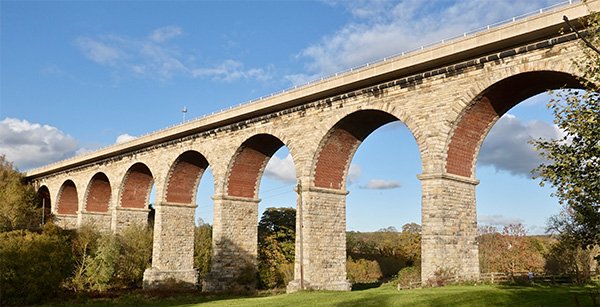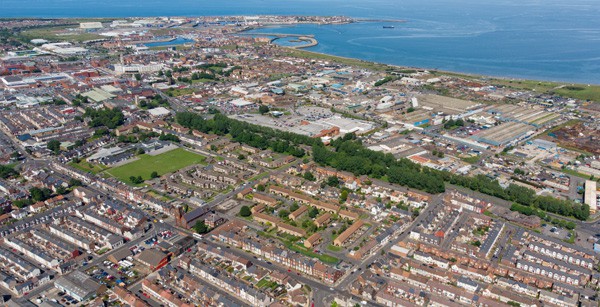Property Investment and Buy-to-Let in the North East
The Best Places to Invest in Property in the North East
A happy hunting ground for property investors is something that might be said of the north of England, generally. But there’s one place that is even better than the north …. and that’s the north-east. That’s all thanks to its unique mix of low property prices, high rental yields and good prospects for rising property prices in future. Here’s our guide to the best places to invest in property in the towns and cities of north-east England.
Why Invest in the North-East?
Investors looking for bargain property investments will find that the north-east can’t be beaten for value. According to the current UK House Price Index from HM Land Registry, the north-east of England is the cheapest place for property, by far. The average price for a house here, new builds excluded, is just £125,650… compared to the average house price across England of £251,233.
Low property prices mean strong yields for investors too. Statistics suggest it is not too difficult to find annual returns of 8% to 9% in the north-east – read on to find out where.
The north-east region comprises Tyne and Wear, Teesside, County Durham and Northumberland. Although it is England’s smallest region it still has a population of around 2.6 million, so there is a very large and diverse property market here.
And here’s some good news for property investors looking for up and coming areas: The north-east economy is sometimes thought of as being behind much of the country. But this report says that, although there are still some issues, the north-east is closing the economic gap on the rest of the country.
The European Commission says that productivity, jobs, income and investment have increased in the north-east, and the economy is becoming more mixed with an increase in knowledge-based businesses. Really good news is that it reveals technology start-up figures are the highest in the country compared to the region’s size, and skills in the north-east are improving faster than the national average.
The north-east is a popular student location offering student property investment opportunities. Although Newcastle has the largest student population investors might look at student accommodation investments in Sunderland, Durham and Middlesbrough where there are also universities.
Property Values in the North East
Newcastle in Tyneside is one of the cheapest major cities for property in England according to Hometrack. They say that the current average price in Newcastle is £129,700.
Although the official average property price in the north-east is just under £126,000 it is not difficult to find property investments much cheaper than this. It is possible to buy houses and flats in parts of the region from as little as £17,000!
This local press report points out that while property prices in some parts of the north-east are rising, in others they are actually falling – it recommends now might be a good time for north-east property hunters to buy.

Rental Demand in the North East
Although it’s cheap to buy a home here, there’s still a strong demand for property to rent. Local agents Bricks & Mortar, say ‘the north-east boasts an array of hidden gems within the UK’s buy to let market’ and that it is ‘fuelled by affordable housing and growing demand for rental properties.’
This report from The Telegraph says north-east England offers some of the best prospects for buy to let investors. They say that Hartlepool and County Durham are amongst some of the places giving investors the best return on a £25,000 investment.
A selection of articles on the buy-to-let property investment market in the North East
Investment in the North-East
Here’s our town-by-town guide to property investment opportunities in north-east England.
Newcastle
Population: 292,200
Average House Price: £166,662
The City of Newcastle, or more correctly Newcastle upon Tyne, is the unofficial capital of the north-east - but don't tell people from Sunderland or Gateshead that! The wider Tyne and Wear area has a population of around 1.65 million people.
Newcastle’s once-industrial economy has been transformed in recent years. The largest employers include the public sector, financial and professional services, construction, transport and automotive industries, and Newcastle also has an emerging creative and digital sector.
Newcastle is a major student city, so good news for student property investors. The University of Newcastle upon Tyne has around 23,000 students and Northumbria University has around 27,000.
For more information see our article here.
On landlord yields, the NE1 and NE6 postcodes can offer over 8% annual returns according to Totally Money.
Bishop Auckland
Population: 25,455
Average House Price: £105,444 (County Durham area)
Bishop Auckland is a market town and ex-mining area in County Durham, midway between Darlington and Durham City. It’s a low property price hotspot with some of the cheapest house prices in the north-east.
Despite its industrial past, The Guardian newspaper says that Bishop Auckland could be in the midst of a tourist boom!
Yields here, in the Darlington DL14 postcode area, are around 5%.

Durham
Population: 65,500
Average House Price: £105,444 (County Durham area)
The City of Durham is the county town of County Durham. It’s a historic city known for Durham Castle and Durham Cathedral and has been nominated as a UNESCO World Heritage site. Property investors should know that Durham benefits from a tourist trade with 19 million tourist visits a year so offers scope for Airbnb and holiday lets. Durham University means there’s also a student accommodation market.
Durham City itself (DH1) offers a 4% yield. Further out, in the surrounding towns and villages, cheaper property means higher yields are likely. Yields of 6% are possible in DH6 and DH9.
Gateshead
Population: 200,000
Average House Price: £133,838
Gateshead is a separate town across the River Tyne from Newcastle. Gateshead is known for attractions such as the Sage Gateshead, the Baltic Centre for Contemporary Art and Angel of the North. It benefits from great access into Newcastle by road and the Metro suburban railway. However, its biggest attraction for property investors is that average prices are lower than most of Newcastle.
Yields in Gateshead, based on the NE8 postcode, are a healthy 7%.
Hartlepool
Population: 92,000
Average House Price: £110,712
Hartlepool is an industrial town just north of Middlesbrough. It also has popular tourist attractions including Hartlepool Marina and the National Museum of the Royal Navy.
It’s a cheap property investment hotspot with yields, based on TS25, TS26 and TS27 postcodes, up to 5%.

Middlesbrough
Population: 138,400
Average House Price: £118,426
Middlesbrough on Teesside is an industrial and one-time steel town that has suffered economic decline. But Middlesbrough has big plans for regeneration: The Tees Valley Enterprise Zone is helping to attract new businesses and employment and the South Tees Development Corporation or STDC has a masterplan to create a world-class industrial park and 20,000 new jobs over 20 years. Middlesbrough town centre is being regenerated to make it a more appealing place for retail, leisure and city living.
Teesside University is one of the UK’s lesser-known universities but it has 19,000 students and big plans for growth, meaning good opportunities for student accommodation investors.
Middlesbrough is another cheap property hotspot and that means good yields are on offer. Investors could expect over 9% in TS1 and over 7% in TS3.
For more information, we have written an article on Middlesbrough, here.
Stockton-on-Tees
Population: 85,000
Average House Price: £135,188
Stockton on Tees in County Durham borders Middlesbrough but is a separate large town. It incorporates smaller towns such as Thornaby on Tees and Billingham.
Stockton is generally a low price property area although areas in the southern part of the borough like Eaglescliffe and Yarm are pricier commuter spots and good for professional and family buy to lets.
Yields are up to 5% based on the cheaper TS20 and TS21 postcodes.
Sunderland
Population: 277,400
Average House Price: £116,051
The City of Sunderland sits on the River Wear just to the south-east of Newcastle. It has great access into Newcastle by road and Metro but is a separate city with its own identity.
Sunderland is an industrial city and port. Nissan Motor Manufacturing UK or NMUK is its biggest employer and one of the most productive car manufacturing plants in Europe. Doxford International Business Park provides lots of jobs.
Yields here, based on postcodes SR1 to SR6, are 5%-6%.
Washington
Population: 67,000
Average House Price: £116,051 (City of Sunderland area)
Washington is a 1960s new town south of Newcastle and west of Sunderland and is part of the City of Sunderland. It has great access to both and is right on the A1(M) motorway. That makes it a popular and good value residential town for those working in Newcastle or Sunderland, so especially good for buy to let investors.
The Washington NE37 and NE38 postcode areas offer a steady 5% yield.
About Our Data
Note. Population estimates are based on information provided by Localstats. Current average house prices are HM Land Registry UK House Price Index figures. Buy to let yields by postcode are taken from the Totally Money Buy-to-Let Yield Map.
